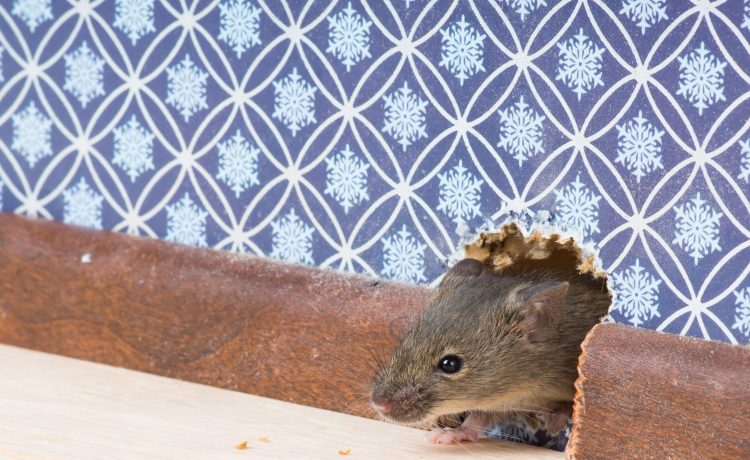Rat infestations are one of the most common pest problems homeowners face. Rats are highly adaptable and can infiltrate homes through the smallest of openings, making them particularly difficult to keep out. Once inside, they can cause significant damage to property, spread diseases, and create a major nuisance. Fortunately, rat-proofing your home can significantly reduce the risk of an infestation.
In this blog post, we’ll cover some of the most effective preventative measures you can take to keep rats out of your home. By implementing these strategies, you can protect your family, your property, and your peace of mind.
1. Seal Entry Points: The First Line of Defense
Rats are expert navigators and can squeeze through openings as small as a quarter. The first step in rat-proofing your home is to seal all potential entry points. Inspect the exterior of your home for gaps, cracks, or holes where rats could sneak in. Pay special attention to areas such as:
- Windows and doors: Check for any gaps or damaged weather stripping around windows and doors. Ensure that doors close tightly and don’t leave any openings.
- Foundation and walls: Examine the foundation for cracks or holes, particularly around pipes, vents, or utility lines. Rats can easily climb through these small openings.
- Roof and attic: Rats can climb walls and trees, so they may find their way into your attic through gaps in the roof or vents. Ensure that roof vents are properly screened and seal any holes or cracks along the roofline.
- Sewer lines and drains: Rats can enter your home through sewer lines, so make sure that sewer openings, floor drains, and other plumbing entry points are sealed with mesh or appropriate covers.
Once you’ve identified potential entry points, seal them with materials such as steel wool, caulk, or weather stripping. For larger holes, you may need to use mesh wire or other durable materials to block the gaps. Regularly inspect your home for new entry points to prevent rats from sneaking in.
2. Maintain a Clean and Tidy Home
Rats are opportunistic feeders and are attracted to homes where food is easily accessible. Maintaining a clean and tidy environment is essential to rat-proofing your home. Here are some tips to minimize food sources for rats:
- Store food properly: Keep food in airtight containers made of glass or plastic, as rats can easily chew through cardboard and plastic bags. Store pet food, dry goods, and pantry items in sealed containers, and make sure to clean up any spilled food immediately.
- Clean up crumbs and spills: Regularly vacuum and wipe down surfaces to ensure there are no crumbs or food debris left behind. Don’t forget to clean under appliances, as food can accumulate there without you noticing.
- Dispose of trash properly: Keep trash in tightly sealed containers and dispose of it regularly. Ensure that garbage cans both inside and outside your home are secure and not overflowing with waste. Rats are attracted to the smell of food scraps in trash, so a secure waste disposal system is crucial.
- Keep pet food stored away: If you have pets, store their food in sealed containers and avoid leaving pet food out overnight. Pet food can quickly become a food source for rats.
3. Eliminate Outdoor Attractions
Rats don’t just look for food inside your home—they are also attracted to food and shelter sources outside. Take steps to eliminate any outdoor conditions that might encourage rats to settle near your home:
- Trim trees and shrubs: Rats can climb trees and use overhanging branches to access your roof and attic. Trim branches that hang close to your house, and make sure shrubs and bushes are kept away from walls and windows.
- Secure compost and outdoor trash: If you compost, use a rat-proof bin or container to store organic waste. Also, ensure that outdoor trash cans have tight-fitting lids and are stored in a place that rats can’t easily access.
- Clear debris and clutter: Rats love hiding in piles of leaves, wood, or other yard debris. Keep your yard free of clutter and regularly clean up fallen leaves, branches, and other waste. Storing firewood and other materials away from your home’s exterior can also help reduce shelter opportunities for rats.
- Maintain outdoor lighting: Although it may not directly repel rats, keeping outdoor areas well-lit at night can deter some pests, including rats. Rats tend to avoid well-lit spaces, as they feel safer in dark and hidden places.
4. Use Rat Repellents and Traps
While prevention is key to rat-proofing your home, using repellents and traps can provide additional protection if you’re concerned about an infestation. There are a variety of products available to help deter rats from entering your home:
- Rat repellents: Some natural repellents, such as peppermint oil, can be placed around entry points or areas where rats have been spotted. While not always effective as a sole method, these repellents can help to deter rats from approaching your home.
- Ultrasonic devices: These devices emit high-frequency sound waves that are unpleasant to rats but inaudible to humans. They can be placed near entry points or in areas where rats have been seen to discourage them from entering.
- Snap traps or live traps: If you suspect that rats have already entered your home, setting traps can help capture them. Snap traps are designed to kill the rats quickly, while live traps allow you to capture them and release them far away from your home. Always check traps frequently to ensure that they are functioning properly.
5. Call a Professional Pest Control Service
If you’ve taken preventive measures but still suspect a rat infestation, it may be time to call in a professional pest control service. A pest control expert can perform a thorough inspection of your property, identify hidden areas where rats might be entering, and create a tailored plan to remove them. Professionals can also offer ongoing monitoring and support to ensure that your home remains rat-free.
A professional service will be able to address any potential nesting sites, apply effective treatments, and help you implement additional rat-proofing strategies to prevent future infestations.
Conclusion
Rats are resourceful and persistent creatures that can find their way into even the most secure homes. However, by taking proactive measures to rat-proof your home, you can greatly reduce the risk of an infestation. Sealing entry points, maintaining a clean environment, eliminating outdoor attractions, and using traps or repellents are all effective strategies to keep rats at bay.
By staying vigilant and taking the right preventative steps, you can protect your home from the dangers and damage caused by rats. If you’re unsure whether your home is rat-proof, or if you suspect an infestation, don’t hesitate to contact a professional pest control service to ensure that your home stays safe and secure. We recommend pest control in new york.







